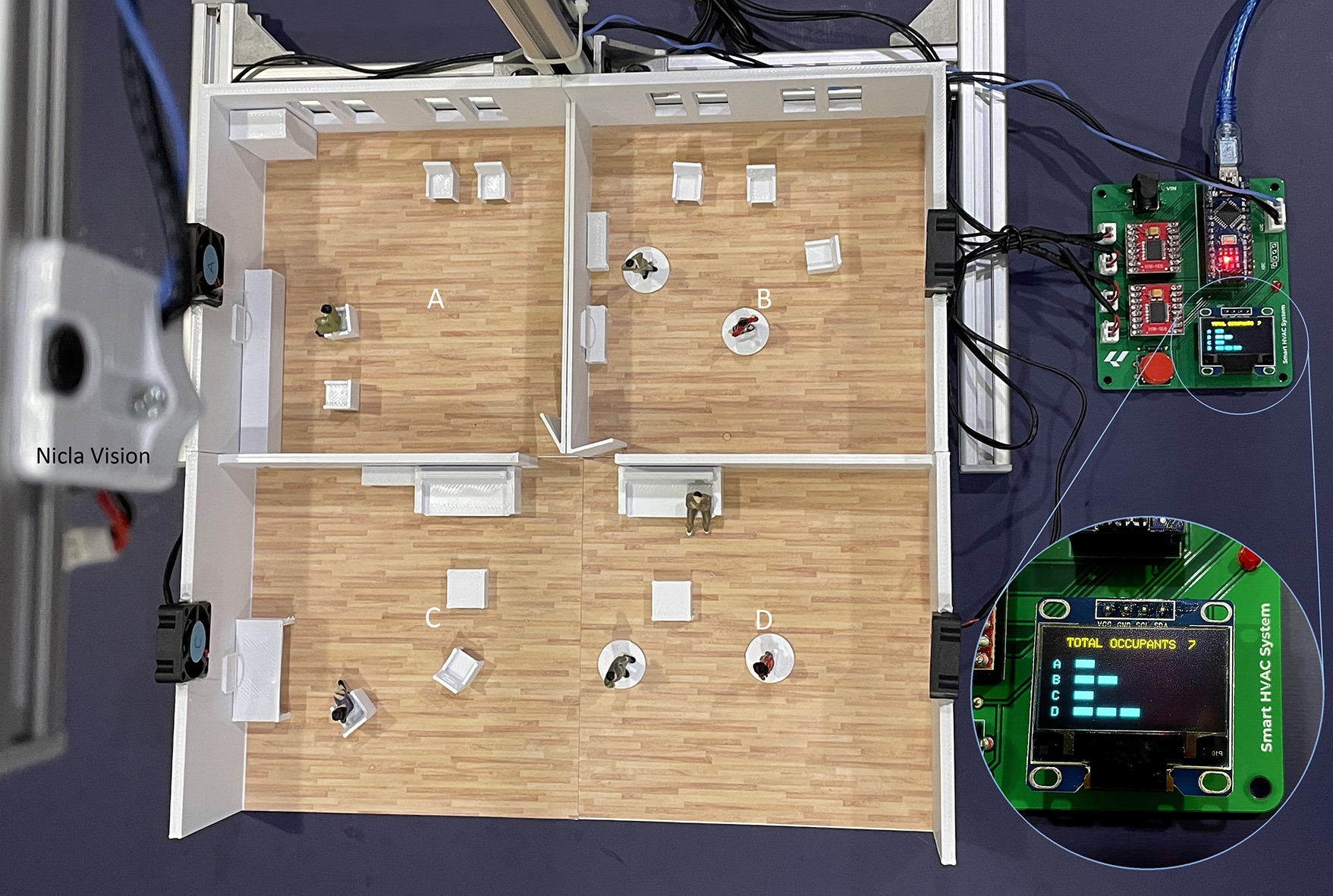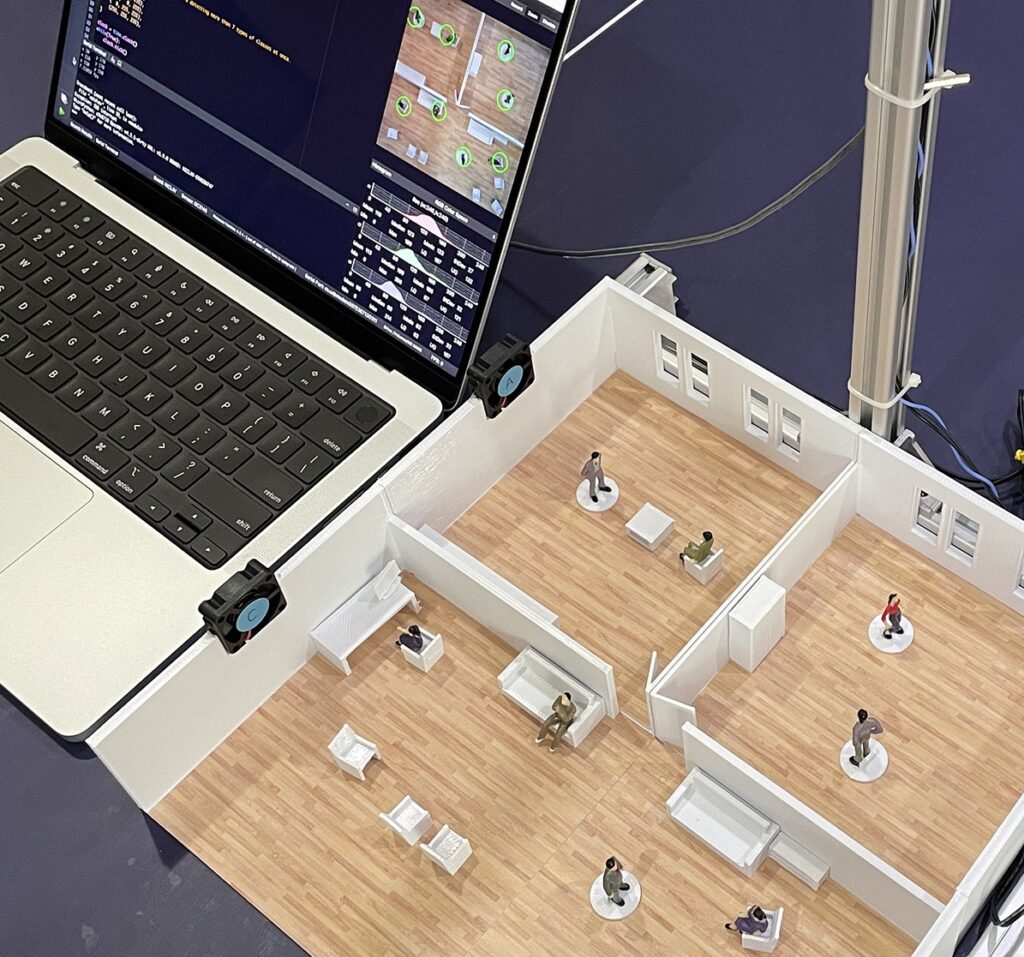23

Shortly after setting the desired temperature of a room, a building’s HVAC system will engage and work to either raise or lower the ambient temperature to match. While this approach generally works well to control the local environment, the strategy also leads to tremendous wastes of energy since it is unable to easily adapt to changes in occupancy or activity. In contrast, Jallson Suryo’s smart HVAC project aims to tailor the amount of cooling to each zone individually by leveraging computer vision to track certain metrics.
Suryo developed his proof of concept as a 1:50 scale model of a plausible office space, complete with four separate rooms and a plethora of human figurines. Employing Edge Impulse and a smartphone, 79 images were captured and had bounding boxes drawn around each person for use in a FOMO-based object detection model. After training, Suryo deployed the OpenMV firmware onto an Arduino Nicla Vision board and was able to view detections in real-time.

The last step involved building an Arduino library containing the model and integrating it into a sketch that communicates with an Arduino Nano peripheral board over I2C by relaying the number of people per quadrant. Based on this data, the Nano dynamically adjusts one of four 5V DC fans to adjust the temperature while displaying relevant information on an OLED screen. To see how this POC works in more detail, you can visit Suryo’s write-up on the Edge Impulse docs page.
The post Intelligently control an HVAC system using the Arduino Nicla Vision appeared first on Arduino Blog.



